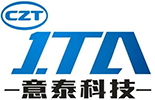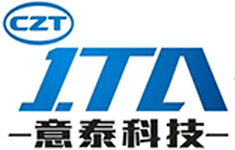專注精密注塑件生產及塑膠模具的開發
股票代碼:002897
National Advisory Hotline
+86-769-89296989Home ? News? Company News
Plastic injection mold copper public and front and back mold processing method
Before writing the knife path, after the stereo picture is finished, the center of the figure should be moved to the origin of the coordinate, and the highest point is moved to Z=0. After the shrinkage rate is added, the machining can be processed, and the copper spark position can process the negative reserve.
Before processing, check whether the clamping direction of the workpiece is the same as the direction of the graphic in the computer. Whether the positioning in the mold is correct, whether the fixture interferes with the processing, and whether the direction of the front and rear molds match. Also check that the tools you are using are complete, the benchmarks in the calibration table, and so on.
Matters needing attention when processing copper:
The determination of the spark position, the general young (ie, Jing Gong) reserve is 0.05~0.15, the coarse public is 0.2~0.5, the specific spark position can be determined by the mold master.
There is no dead corner in the copper public, and it is necessary to dismantle one more.
The cutting path of the processing copper is generally: large knife (flat knife) open thick - small knife (flat knife) clear angle, light knife with ball cutter light surface.
Open the general teacher with a flat knife without a ball knife, use a knife to open the thick knife, then the shape of the light to the number, then use the large ball knife light surface, and then use the small ball knife light surface to save trouble, for some small corners The use of a knife to process the big knife can not pass the dead angle can limit the range of the knife's knife, so as not to broadcast too many empty knives.
Tonggong, especially the young male, is relatively high in precision. The tolerance is generally selected from 0.005 to 0.02 and the step is 0.05 to 0.3. When the copper is open, it is necessary to keep the position of the ball in the knife position, that is, to open the copper profile to a thick knife radius.
Tonggong also needs to be processed in the middle position, the calibration standard, and the copper work should be corrected during the spark discharge. The copper work processed by the three sides (up, down, left, and right) must have three reference faces.
Copper material is a material that is easy to process. The speed of the cutter can be faster. When the thickness is rough, the machining allowance is 0.2~0.5, depending on the size of the workpiece. The machining allowance is large. ,Improve efficiency.
The problem of roughing the front mold,
Firstly, the copper map is rotated 180o in the front view or the side view to become the front pattern. Of course, the pillow position and the PL surface are added. Where the original body is to be left in the mold, do not use the mirror method to copper. The drawing becomes a front pattern, sometimes it is wrong (when the copper figure is asymmetrical in the X direction and the Y direction). There are two difficulties in the processing of the front mold: the material is relatively hard; the front mold cannot be easily welded, and it is wrong.
When the front die is rough, the principle of using the knife is similar to that of the copper work. The big knife is rough → the small knife is thick → the big knife light knife → the small knife light knife, but the front mold should use the big knife as much as possible, not too small knife, easy to knive, the rough is usually first Use the knife handle () to open the thick, and use the round nose knife as much as possible when the light knife is used. Because the knife is large enough and powerful, when the front mold has a parting surface, it usually encounters a problem. When the light knife is used, the parting surface is touched. The machine should be quasi-numbered, and the cavity should have a machining allowance of 0.2~0.5 (leave it out for sparks). This makes it possible to correct the surface of the mold cavity to the positive direction by 0.2 to 0.5, and set the machining allowance to 0 when writing the tool path.
When the front mold is rough or light, the range of the cutter is usually limited. Remember that the range you set is the range of the tool center, not the range of the tool boundary, not the range to which the knife is machined, but the larger the tool radius.
The common method of cutting the front mold is the curved groove and the parallel light knife. When the front mold is processed, the parting surface is generally processed to a quasi-number, and the impact surface can be left with a surplus of 0.1 to prepare the mold.


